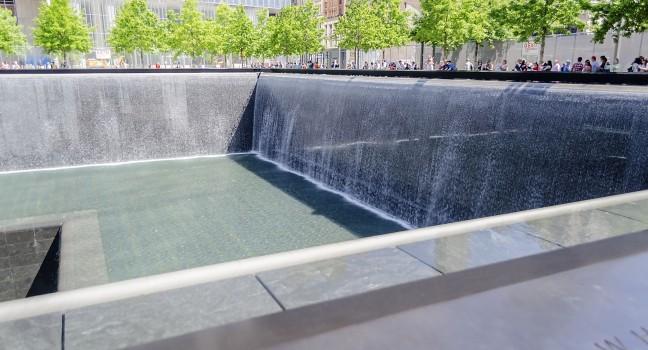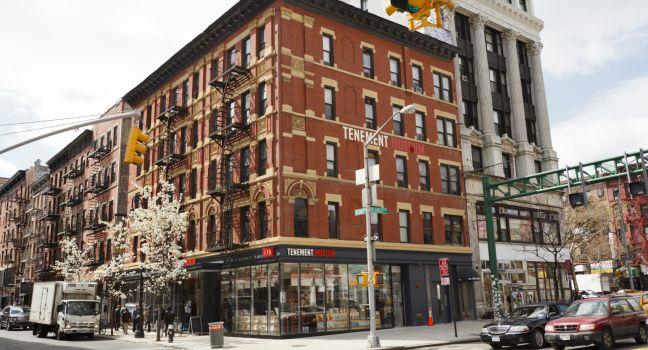9/11 Memorial

Opened in 2011 to mark the 10th anniversary of 9/11, the somber memorial occupies a large swath of the 16-acre World Trade Center complex, forming the Memorial Plaza (part of the National 9/11 Memorial & Museum). It comprises two recessed, 30-foot-tall waterfalls that occupy the giant, square footprints where the Twin Towers once stood. Edging the memorial pools are bronze panels inscribed with the names of the nearly 3,000 people who were killed in the 1993 and 2001 terrorist attacks. Across the plaza are benches, grassy strips, and more than 400 swamp white oak trees harvested from within a 500-mile radius of the site, as well as from Pennsylvania and near Washington, D.C. The 9/11 Memorial is an open-access, free public plaza.
Along Liberty Street on the south side of the site is the elevated Liberty Park, home to Fritz Koenig's The Sphere, which for three decades stood on the plaza at the World Trade Center as a symbol of peace. Damaged in the 2001 attack, the sculpture was installed in the park in 2017. On the park's east end stands St. Nicholas Greek Orthodox Church and National Shrine ( stnicholaswtc.org), erected to replace the church that was destroyed on 9/11. Unlike an average church, this house of worship cost $85 million, took 21 years to design and construct, and among its splendid features, was built with white marble sourced from the same Greek quarry as the Parthenon's stone. Visitors are welcome daily (except Tuesday), 10--3; and on Sunday 9--2.




